Skin: Skin types (ages 11-13)
Good Skin Knowledge lesson plan
Time: 45 min
Objective
Students will be able to:
Provide at least two tips for washing their face
Give a brief description of each skin type
Materials
Writing utensils (enough for class)
Computer/projector/speakers to show YouTube video
Assessment
After watching Face Washing 101 YouTube video, assess how students answer questions regarding the video.
During Independent Practice, evaluate student work by walking around and checking for questions.
Opening
3 minutes
Ask the students what type of music they like.
Ask students what type of sports they like.
After questions, explain, “Even though everything named was different, they were still all either “music” or “sports.” It’s the same with skin.”
Explain that we all have skin, but we all may not have the same “skin type.”
Ask students what they think s/he means by “skin type.” Listen to students’ responses without correcting them. Say we are going to learn about the three basic skin types, and you might identify which is like yours.
Introduction to new material
20 minutes
Materials: Computer/projector/speakers and Skin Type handout
Explain that we should take care of our skin based on our skin type.
Explain that there are three main types of skin: dry, oil, and combination. Depending on our skin type, we should take care of our skin in a certain way. There is also an important technique for face washing.
Explain they will be watching a brief video on how to wash their faces properly because, believe it or not, many people do it incorrectly and are too rough on their skin! Play Face Washing 101 YouTube video
Ask students, “What are some of the important tips from the video?” Possible answers are:
Gentle around eyes
Don’t scrub
Wash once in the morning and once at night
Use gentle cleanser—without alcohol
Pat dry
Wash after sweating
Use fingertips to apply cleanser
Use lukewarm water—not hot
Use moisturizer
Explain the general rule of thumb to face washing: Once in the morning and once at night. However, depending on your skin type, you may only wash once a day or up to three times a day.
Stress that it’s important to talk to your dermatologist about your skin type since skin is delicate and you want to make sure you are treating it correctly.
Put students in pairs/groups with the people sitting closest to them and explains they will be reading a section of the Skin Type handout. Assign groups to read either “combination,” “oily,” or “dry” skin information. It’s okay if there are multiple groups reading the same section.
Give students about 3 minutes to read their section. Ask those who read the “combination” (or “oily” or “dry”) section to describe what their assigned skin type is. Then ask what type of cleanser/moisturizer people with that type of skin type should be using. Repeat with other two sections.
Independent practice
10-15 minutes
Materials: My Skin Routine worksheet (enough for class)
Tell students that they are going to plan their face washing routine on the worksheet s/he will hand out.
Based on information covered in lesson and using the Skin Type handout as a reference, students will identify their own skin type and write it down on the first blank line.
Students will then, depending on what each thinks his or her skin type is, circle the type of face wash and moisturizer they should use.
After, they will write down how many times they think they should wash their face and why they chose that answer. Remind them that, besides morning and night, it’s important to wash face after sweating—so do they play sports? Do they have dry skin and will wash less often? These are things to think about.
Explain that we all have different skin—no two people have the same exact skin—so students will write down why they love their own skin. Even if it makes them crazy sometimes, why do they love it—the color? The softness? They way it looks in the summer? Maybe they like it because they can get a cut and it always seems like it heals quickly!
Make sure to clarify that they should speak to their parents and a dermatologist before using these routines to verify their skin type and the types of products they should be using for their skin, especially since they may have sensitive skin.
Walk around class to check for questions on students’ work.
Closing
5 minutes
Ask if any students want to share what they wrote as their answer to the last question: “I love my skin because…”. If students are unresponsive, say why you love your own skin and then see if any students are willing to participate.
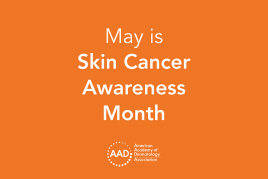 Think sun protection during Skin Cancer Awareness Month
Think sun protection during Skin Cancer Awareness Month
 How to care for your skin if you have lupus
How to care for your skin if you have lupus
 Practice Safe Sun
Practice Safe Sun
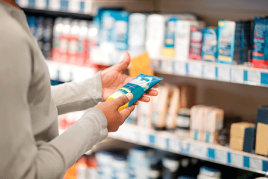 Sunscreen FAQs
Sunscreen FAQs
 Fade dark spots
Fade dark spots
 Hidradenitis suppurativa
Hidradenitis suppurativa
 Laser hair removal
Laser hair removal
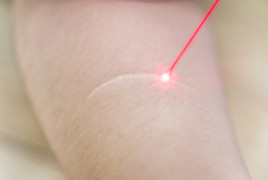 Scar treatment
Scar treatment
 Botox
Botox
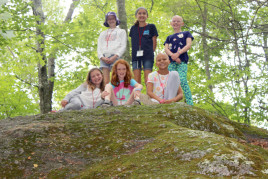 Kids' camp - Camp Discovery
Kids' camp - Camp Discovery
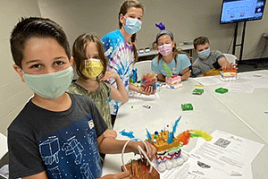 Dermatologist-approved lesson plans, activities you can use
Dermatologist-approved lesson plans, activities you can use
 Find a Dermatologist
Find a Dermatologist
 Why choose a board-certified dermatologist?
Why choose a board-certified dermatologist?